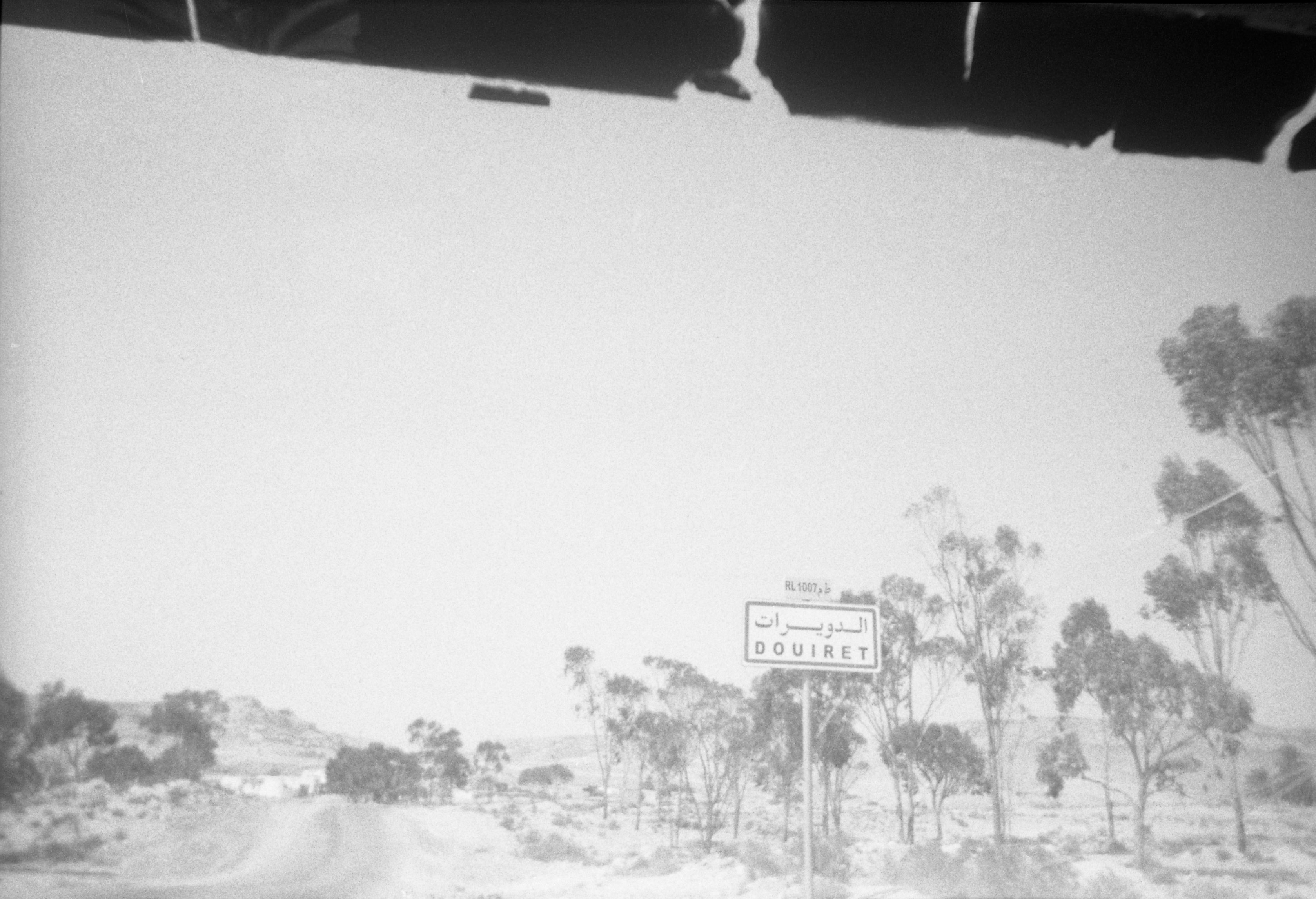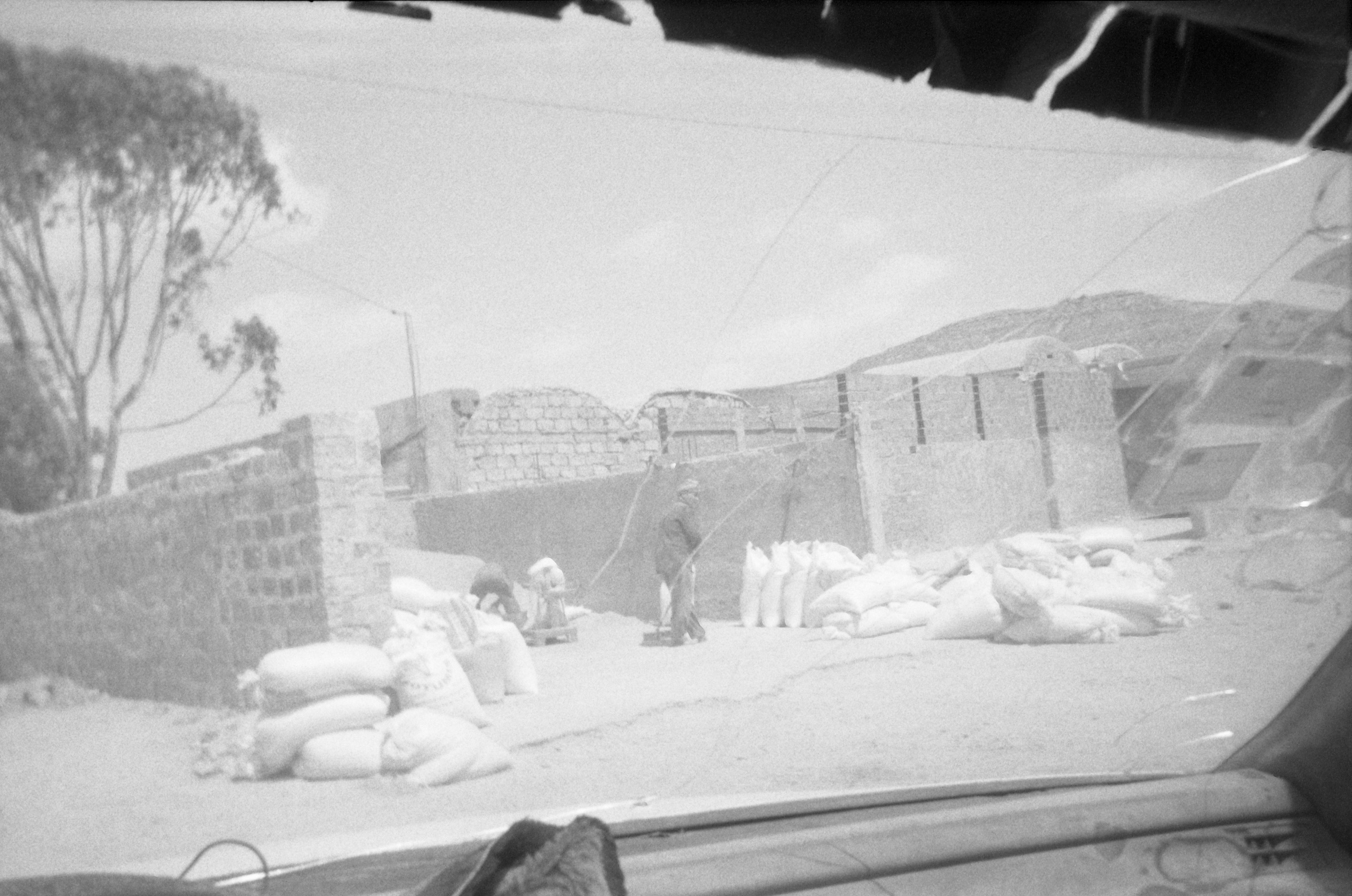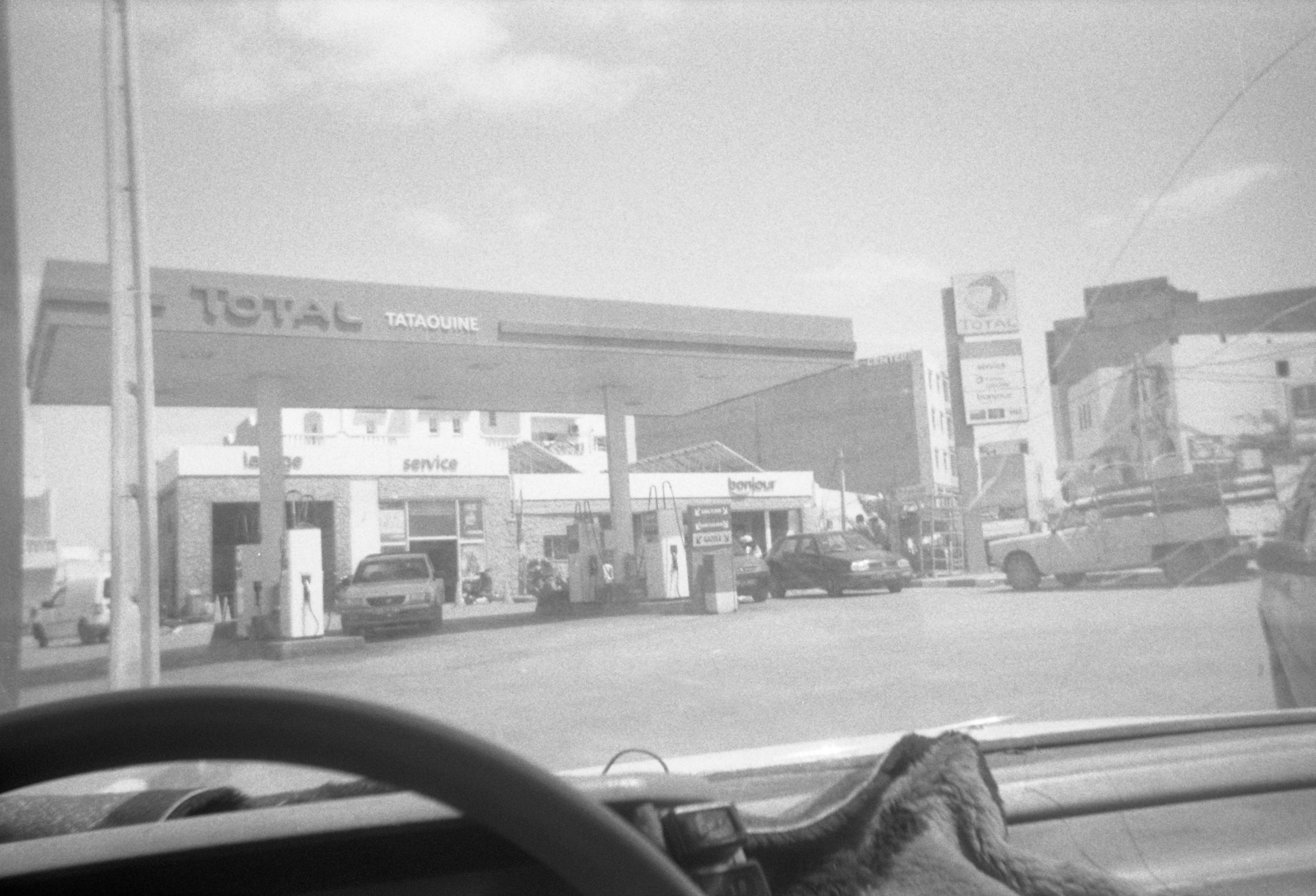Said
Tunisia photovoice
Facilitated by Linda Pappagallo
Said decided to take most of his pictures from inside the car, to and from Douiret, waiting in front of gas stations, shops and while fodder is unloaded. His mobility and movement contrasts with the stillness of the café culture. This captures the tension between returning to a simpler life and leaving to follow aspirations:
“There are two kinds of people: the first kind is those who leave and spend a while away, they spend seven or eight years with many challenges: finding housing and transportation and the challenge of finding a job. These things push people to return to their birth places. Then there are those who stay, they have aspirations. They are the new generation. When they stay here in Douiret, they spend their days between coffee shops, as if their way is blocked here. They have aspirations of leaving to go abroad or to go to Tunis.”

“I went to Tunis in 2005 and I stayed there until 2014. I worked mostly in commerce, I worked in fairs, when they used to host fairs. I toured the whole of Tunisia working in fairs and in souks.”

“I sold traditional handicrafts in Douze, Kebili, Kasserine, Gafsa, Sidi Bouzid, Bizerte and Nabeul. I toured the whole coast, El Kaala El Kobra, El Kaala Soghra and El Sahline as well. I also went to Gabes, Zarsis, Bèja and I worked in Jendouba for a little while.”

“But I then came back because of health reasons, I suffer from asthma and I can’t handle moisture. I faced a lot of mental health issues, I had a mental breakdown, my family wanted to get me out of that psychological distress through this project (livestock). In a way it is some kind of alternative medicine.”

“I have a passion for raising livestock, and when they saw that this project is taking off, they all came to support me.”

“One cannot do everything singlehandedly in all aspects, whether it is psychological or financial or physical.”